Our favourite places to stay on this sleepy Cebu island.
How to Take Better Action Shots — Sports Photographers Share Tips!
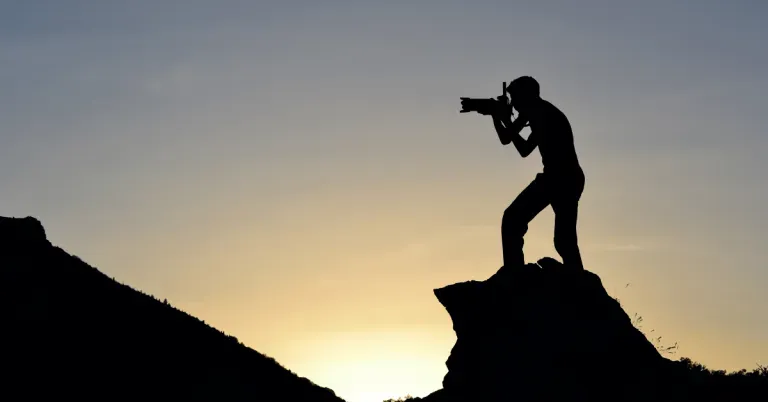
After exploring topics about travelling for the ‘gram, we’ve seen an almost unanimous opinion among our readers — travel and photography do go hand-in-hand! Most of us enjoy documenting our adventures; whenever we want to reminisce about a certain trip, we just flip through our photo albums. Or, of course, scroll through our social media accounts.
With that, we only want the best photos for our travel memories. And who else better knows how to document our on-the-go than sports photographers? Below, Pinoy sports photographers share their pro tips on how to best capture candid shots, as well as some stories behind their all-time favourite .
Also read: 7 Best (& Affordable!) Camera Phones to Get This 2020
1. Let your photos tell a story. – Sherwin Vardeleon
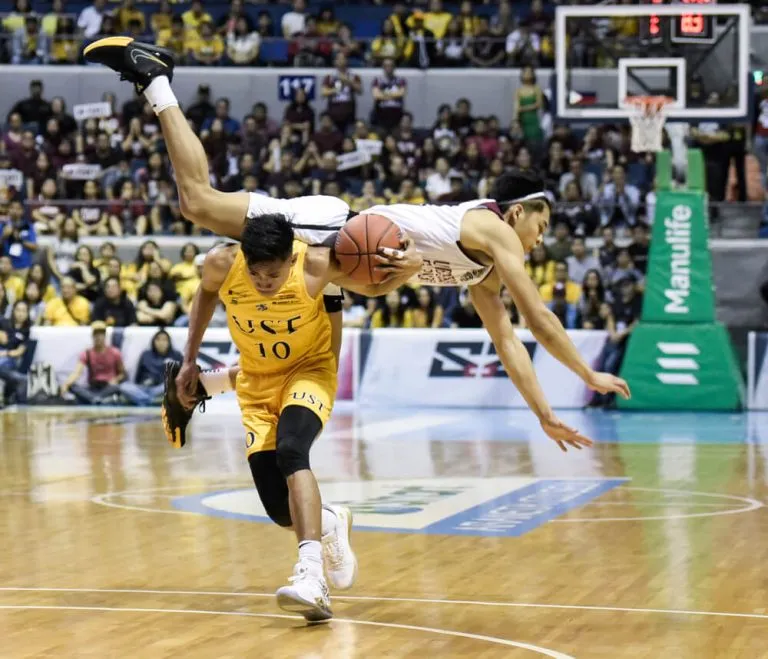
“I captured this photo during the UAAP Season 82: UST versus UP. I like this shot because I don’t usually get this kind of action shot — not in my nine years of shooting sports, at least. For me, this photo is very fitting, because UST won this game and my shot reflected what happened.”
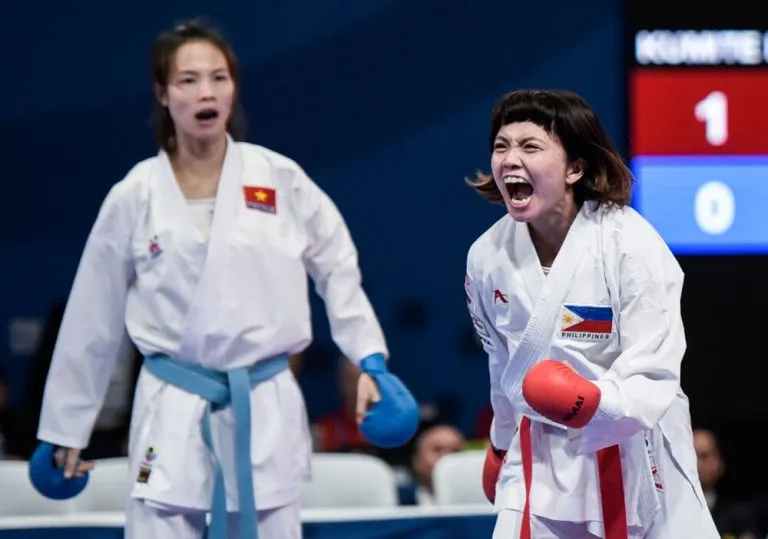
“This photo is one of my favourite emotion shots. I took this during the 2019 SEA Games, when Junna Tsukii struck gold. I like it because it shows two different emotions: the victor’s and the loser’s. The 1-0 score in the background further emphasises this winning moment.
Whenever I take sports photography, I gear up with a competitive mentality as well. In other words, I take every coverage as a competition against other photographers. I know that this is the same mentality the best athletes in the world — LeBron James, Tom Brady, and other greats — have. They give their best at every game.
At the end of the day, I want to have captured something unique that I will remember the rest of my life. I always strive to take the best, most unique . That way, even if I don’t actually get the ideal shot, at least I know that I did my best.”
What is the most important element of an action shot?
As a sports photographer, I always look for unique shots. Those aren’t always ; sometimes, they’re photos of emotions or celebrations. But more often than not, are the staple for sports.
In capturing moments, the most important element is the story behind the photo. Action shots shouldn’t be made as a way to shame an athlete or make fun of someone. Rather, it should contain intensity.
By just looking at a photo, the audience should feel what happened in that game. A good action shot in sports can immediately tell the viewer who won or who lost.
As with any other form of photojournalism, you can’t direct an action shot because things happen in a flash. So, you need to be alert at all times. Sports are always fast-paced. If you blink, you might miss a moment.
I always look for emotion shots during every game because, for me, this is what makes up a sport. Emotion shots tell a unique story in every photo, because the competition is what makes sports exciting. The losing or winning are precious moments — these only happen once because every game is a different animal. My goal is to capture these moments and show them to everyone, so they understand what is happening.
What’s one thing budding photographers should know about taking ?
When covering sports events, concentrate and don’t get starstruck. It’s most important not to take sides. You can’t cheer while covering because you won’t be able to capture the crucial moments. You can’t busy yourself with jeering the referee or the opposing player; neither can you be too caught up celebrating — you’ll end up missing the opportunities to capture the celebration.
2. Know how your subject moves and reacts. – Michael Perfecto
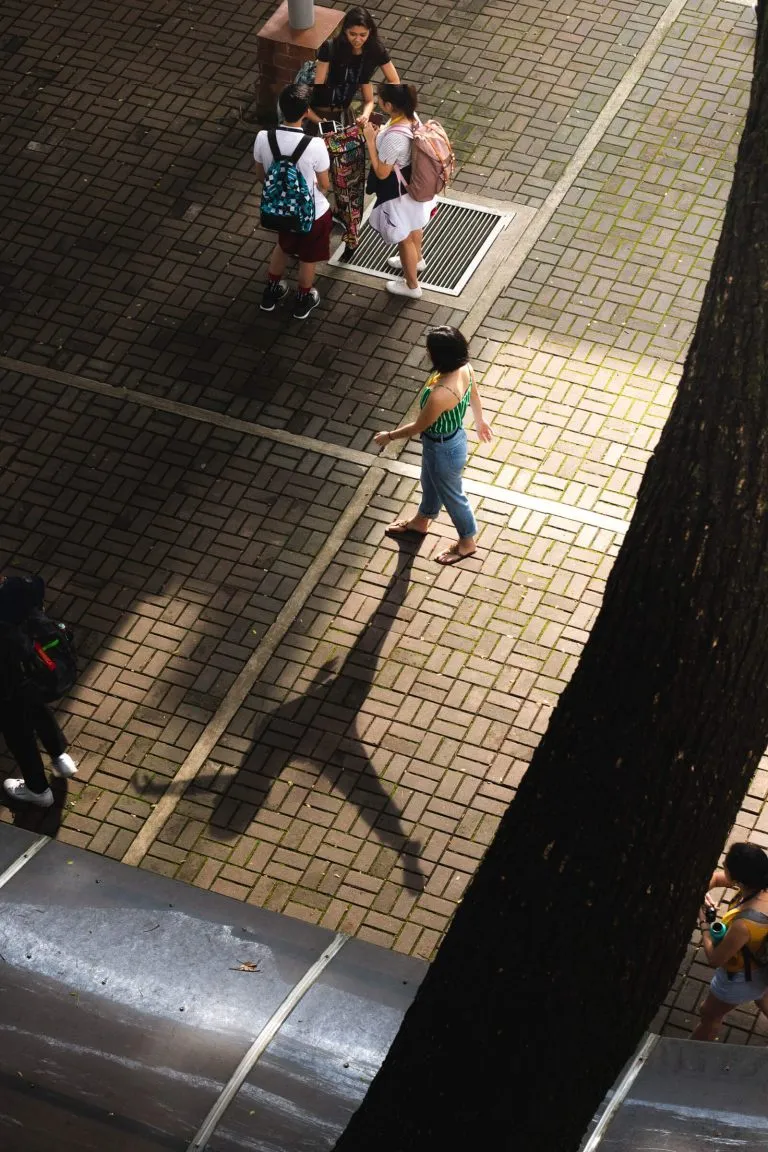
“In 2018, I took this composite photo. It’s about ‘retired’ dancers — the action part there is capturing my dancer friend’s shadow.
The time I took this, I was actually inspired by our organisation’s challenge for the applicants to shoot dancers. So, I decided to make this photo. I was overwhelmed with the number of dancers the photo reached when I posted it for the first time, so this photo is very personal to me.”
What is the most important element of an action shot?
Knowing your subject. Whether you’re shooting sports, dance, or moments on the street, knowing how your subject moves and reacts can help you prepare to capture their movements.
For example, ballerinas need the movements to be shown as precise as possible. A photo of a ballerina with an extended but bent leg, although would look good to most people, would be considered a bad shot by the subject and those who know how that specific move should look like.
What’s one thing budding photographers should know about taking ?
Timing is important, but composition makes a difference. A lot of people can time a shot correctly. Sometimes, all you need to do is to use the burst setting. What would create the difference is where your subject is placed, your angle, and how the elements (or the lack of it) complement the subject in the photo.
3. Shoot something you enjoy. – Gabe Ferrer
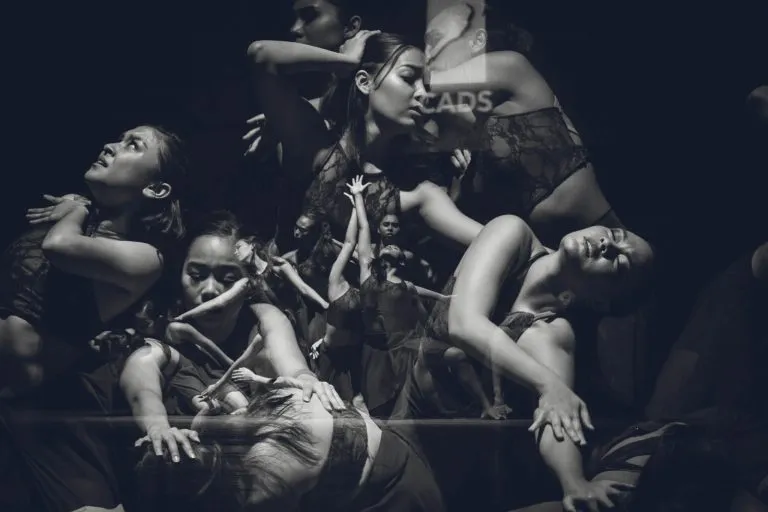
“This photo was shot during a dance concert by The Company of Ateneo Dancers. It was the introduction to a riveting contemporary piece. Personally, I prefer to shoot in double exposures; it adds a layer of texture and gives a new or emphasised meaning to moments by creating contrast and adding an element of surrealism.”
What is the most important element of an action shot?
I think the most important element is the emotional pull of a photograph. There’s a lot of things that make a great action shot. Everything — the framing, timing and lighting, among others — will contribute to a great shot.
Take, for example, the famous photo of Muhammad Ali standing over Sonny Liston shot by Neil Leifer. That moment lasted for a mere second; but, the timing of the shot was perfect. The heated emotion of Ali as he stood over his opponent really shone in that photograph.
What’s one thing budding photographers should know about taking ?
On the practical side, I never compromise my shutter speed unless I want to catch a little motion blur. Completely blurry subjects don’t always work too well for action photography, unless it’s done tastefully.
Personally, I think aspiring action photographers should shoot something they enjoy playing or watching. It could be skateboarding, dancing, surfing or any other sport they’re already interested in. It’s much easier to start that way because you’re already familiar with the timing and the important moments to capture.
4. The best have good composition and emotion. – Tristan Tamayo
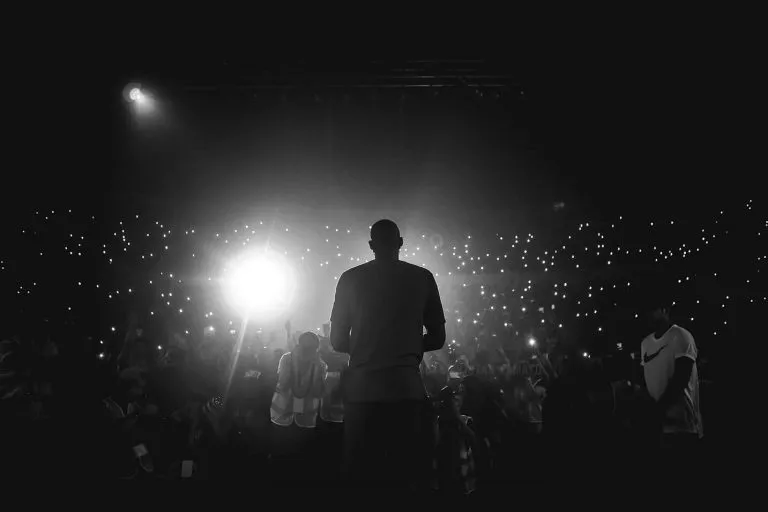
“My inspiration for this shot came from the subject himself, Kobe Bryant. He was my childhood hero. I’ve always wanted to embody his work ethic and his mentality to be the best version of oneself. Regardless of what line of work you’re in and what the world throws in front of you, you must work and deliver. It’s only fitting that I did my best to get the best shot that day. This mentality continues to be my motivation in everything I do.
I don’t consider this an action shot; it’s more of a portrait and memento. I took this in the first and last Kobe Nike tour I’ve ever covered. At that time, I wasn’t shooting for Nike yet, so I had limited access to get near him.
Right before the closing remarks, we had a go signal to come inside the court. Everyone was trying to get in front of him to take photos. Then, I thought to myself, We’ll all have the same photos (if I stand in front, too). I don’t want that, I want to stand out. So, I positioned myself behind him to make him stand out while using the other photographers and the crowd as my backdrop.
This is a special photo for me because this moment will never happen again. I think I’m the only one who took a photo like this during the entire event. For me, this photo represents a basketball nation’s love and appreciation for one of the best basketball players.”
What is the most important element of an action shot?
For me, the most important element of an action shot is the composition and emotion. The composition tells the story of what, when, and where a specific sporting event is taking place. At the same time, it gives the viewers an idea or brief story without the use of words.
On the other hand, emotion, regardless of sport, shows and connects to the viewers by giving the feeling of triumph or defeat. A good combination of both will always result in a great photo.
What’s one thing budding photographers should know about taking ?
If you’re just starting out in sports photography, learn about the game you’ll be shooting. Knowing this will give you an advantage. You’ll be able to anticipate and predict certain moments in the game. You’ll have more creative ideas about composition, and you’ll be able to position yourself better.
5. Know the sport and study it before going out. – Tiara Mejos
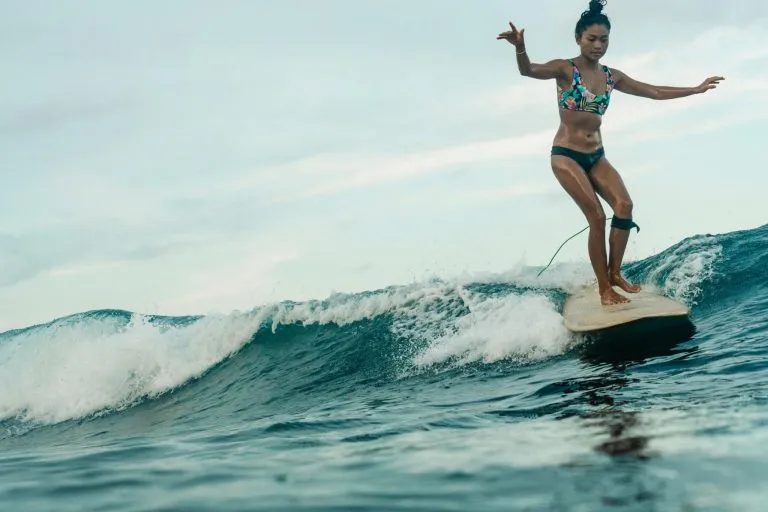
“It was Holy Week and we decided to go camping in Northern Aurora to escape the crowd in Baler. Rooms were all rented out and we didn’t have anywhere to sleep. We were not prepared to camp — we didn’t even have a knife — but the waves were fun and I was with good friends and our dogs.
I decided I would shoot in the afternoon and get some surf shots of my friends with the colours of the sunset. I was also rewarded with a gorgeous moonrise.
The photo was taken in the afternoon, just as the sun was about to set. There were other surfers, but I decided to just focus on the longboarders. There were only three of them surfing the break, while the rest were surfing the left. Focusing on three surfers made the shooting experience easier, as I could tell which surfer was going to take a wave and where to position myself to get a better angle of the surfers cross-stepping.”
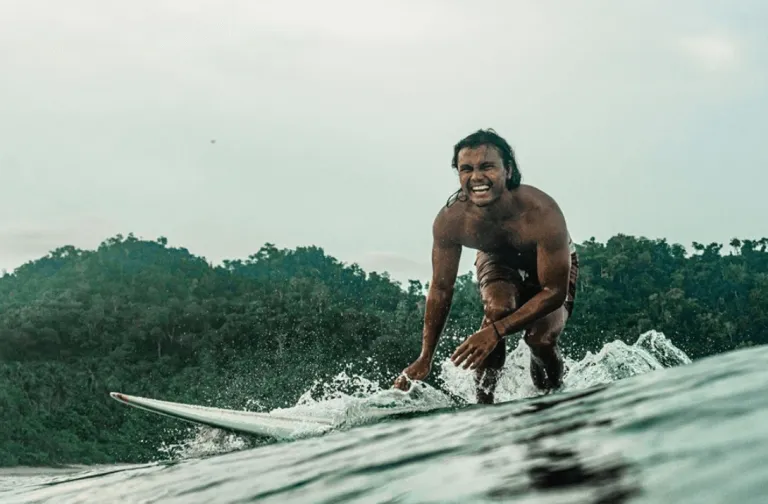
“I wanted a closer angle, so I swam and hoped that I did my measurements right. In the water, it’s so dynamic and you can’t really use your viewfinder as when you’re shooting on land. So, I rely on estimates and hope that I didn’t cut off the surfer’s head. I really like this photo because it conveys how much fun Mario (the surfer) is having.”
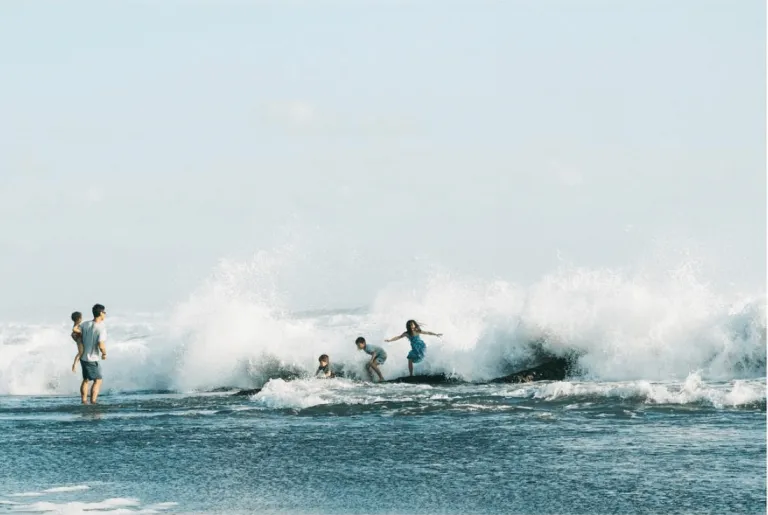
“This one was shot in Canggu, Bali, during a lifestyle portrait session with the Keets family. I saw this big set while photographing them; I started to move away from the shore because the shore break could have gotten big enough to drench my camera if I wasn’t careful. But I saw the kids trying to run away, so I ran back to the shore and started snapping.
The kids washed up on the shore and into their parents’ arms — that pretty much ended the family portrait session. I didn’t get to take the beach photos that I prepared for, but I caught one of the most epic wipeouts I’ve ever seen on camera.”
What is the most important element of an action shot?
For me, need to tell a story. I want to feel like I’m in the action, that I’m in the photo almost. It might sound cliché and cheesy, but action photos should convey emotions. In sports, for example, it could be the determination of the athlete or the stoked smile on a surfer’s face.
What’s one thing budding photographers should know about taking ?
Know the sport and study it before going out. In my case, I need to study a break (surf spot) first. I need to know where to position myself in the water, what the current is doing, how shallow the water is, and who and how skilled the surfers are out there.
Being familiar with the sport also helps you anticipate the moments you want to capture. This also makes you an efficient photographer, because you need to conserve as much energy as you can when shooting in the water!
Also read: 8 Astrophotography Tips from Filipino Photographers
Make your memories last forever — and make sure they aren’t blurred!
While we’re waiting for our next trips, it’s the perfect time to practice our . Share your photos with us on Instagram, so we can feature them on our feed!
These quotes have been edited for grammar, clarity and flow.
Published at
About Author
Danielle Uy
Subscribe our Newsletter
Get our weekly tips and travel news!
Recommended Articles
10 Bantayan Island Resorts, Hotels, and Rentals for Your Tropical Escape 10 Best Mountain Cafes in the Philippines for Your Peak Coffee Experience Coffee date on the mountains, anyone?
10 Instagrammable Laguna Restaurants and Cafes You’ll Love Elevate your Insta-game at these Laguna spots.
10 Pristine Beaches in Batangas for a Relaxing Tropical Break All within arm’s reach of Manila!
10 Visa-Free Destinations Perfect for Your Family’s Holiday Vacation Yes, family vacations are priceless. But the planning can be a major pain! If we’re being honest, we’d really prefer a stress-free experience, please. One of the biggest hurdles in planning an out-of-the-country trip with the family is getting visas for everyone on board. It’s time-consuming, expensive, and just generally very stressful. Luckily, there are […]
Latest Articles
Dingalan Travel Guide: Nature Spots to Discover Now Underrated coastal gem in Aurora
What to Eat in Bicol: Iconic Dishes and Treats, and Unique Pasalubong You’ll Love Spice up your foodie adventure with iconic Bicol dishes and must-try pasalubong!
Top Travel Trends in the Philippines for 2025 New spots, tips, and trends
New UK Adventure Park to Visit in Devon and Cornwall Fun countryside escape near London
Ultimate Camarines Norte Travel Guide: Waterfalls, Beaches, and More From surfing to secret waterfalls, Camarines Norte is your next escape!

